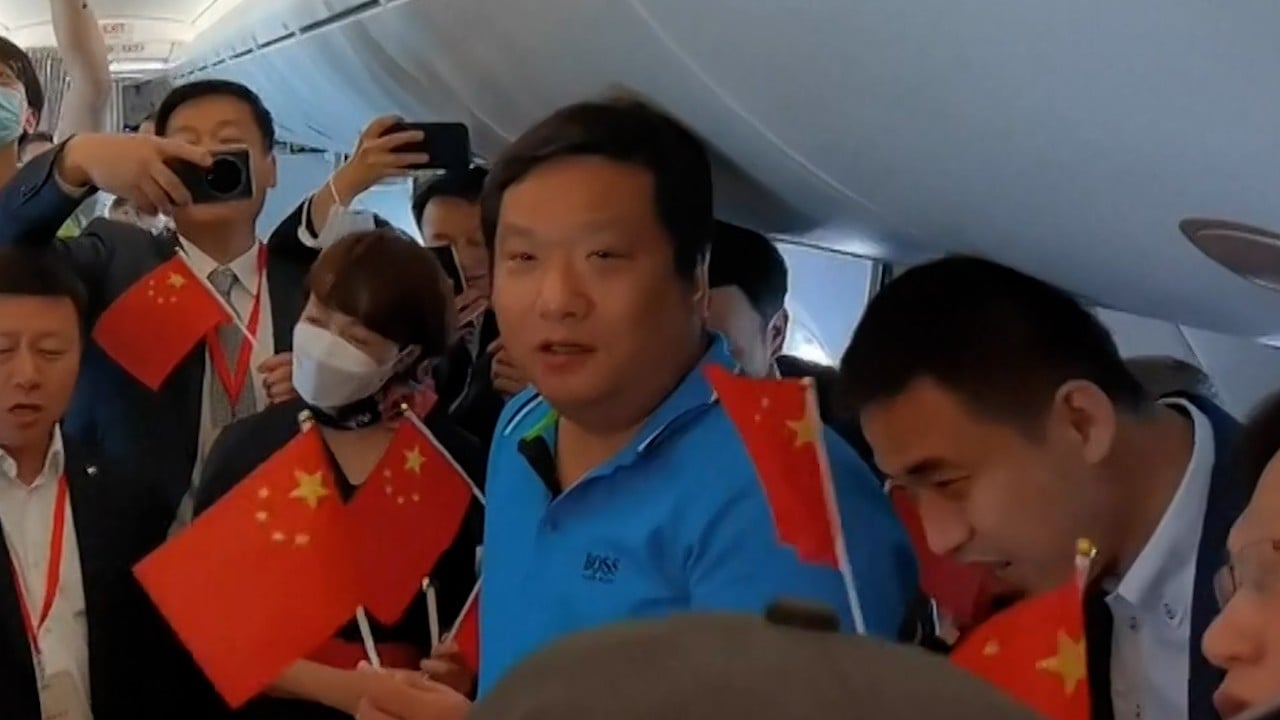
02:34
Why it took China’s home-grown C919 plane 15 years to start flying passengers
Explainer | How vulnerable is China’s C919 narrowbody passenger jet to US sanctions and could they clip its wings?
- China’s C919 narrowbody passenger jet went into commercial operation this year, but relies on imported parts and technology, especially from the US
- But the US has rolled out restrictions aimed at preventing US-made civil aviation products from being diverted for military use
The United States has expanded its export controls and trade sanctions against China over advanced technology, including semiconductors and aviation, as relations between Beijing and Washington have deteriorated.
However, the plane, which took more than 14 years to develop, relies on imported parts and technology, especially from the US.
The C919’s LEAP engine is made by CFM International, a joint venture between American firm GE Aviation and France’s Safran Aircraft Engines.
What are the restrictions relating to aviation?
Over the years, the US government has grown wary of China’s civil-military strategy, which aims to ensure military and economic development advances in lockstep with scientific and technological innovation.
The US government has said that the restrictions are necessary to prevent US-made civil aviation products from being diverted for military use.
Since 2020, several subsidiaries of China’s biggest defence contractor, Aviation Industry Corporation of China (Avic), which is a key supplier to the C919, have already been designated as military end users.
A unit under the state-owned Aero Engine Corporation of China (AECC), AECC Commercial Aircraft Engine, which is designing a replacement engine for the CFM LEAP engine, has also been designated as a military end user.
Under US rules, designated entities are prohibited from receiving certain items unless the exporter secures a licence.
In 2022, the US Department of Commerce’s Bureau of Industry and Security designated Shanghai Aircraft Design and Research Institute and Shanghai Aircraft Manufacturing as military end users.
Both are under the Commercial Aircraft Corporation of China (Comac), the producer of the C919.
In August, the US government adopted new export controls on technologies that support the production of advanced semiconductors and gas turbine engines that it said are critical to its national security.
What’s the impact of the restrictions on Comac?
Comac currently produces two planes, the ARJ21 regional jet and the C919, both of which count on foreign technology and parts.
China Eastern Airlines began to fly the first C919 in May after ordering five of the planes that are designed to compete with Boeing’s 737 and Airbus’ A320.
In 2020, the Trump administration granted a licence to GE to supply engines for the C919 following media reports that the US government might deny a licence request to provide the CFM LEAP engine.
In a round table discussion arranged by Civil Aviation University of China in December last year, Le Wei, director of the legal and compliance department at the Shanghai Aircraft Design and Research Institute, acknowledged the US export control changes had affected “security of the supply chain of China’s civil aviation manufacturing industry and the steady development of the industry”, according to comments published by the university.
To respond to the new rules, Le said Comac had established “complete traceability of upstream and downstream supply chains system and has strengthened the management of supplier compliance certification documents”.
Le also expects US efforts to “constrain China’s high-end manufacturing” to intensify and that China needs to increase the “degree of autonomy” in key technologies to counter any restrictions.
What other factors may affect the C919?
China and Russia have combined efforts to develop a widebody passenger jet, the CR929, but such joint ventures may also bring about sanction risks.
“Running the Sino-Russian cooperation in aerospace, the only field where Moscow can offer more than just raw products to Beijing, will also be considered,” said Jean-François Dufour, co-founder of consulting firm Sinopole.
“Therefore, its global supply chain is a vulnerability for the C919 programme, but it appears unprovable now it will become real unless the general Sino-US relationship turns really sour.”
Whether the C919 can compete with the A320neo was its original mission, but it remains to be seen
Dufour also believes it is unlikely that Europe would proactively step-up export controls on China, largely due to Airbus’ growing investment in the Chinese market after replacing Boeing as the dominant supplier of passenger jets.
“Whether the C919 can compete with the A320neo was its original mission, but it remains to be seen. Chinese airlines will be submitted to pressure for favouring the national model, but at the same time are submitted to pressure for being efficient,” Dufour added.
What’s the outlook for China-US tech trade?
But Stephen Olson, a senior research fellow at the Hinrich Foundation and a former trade negotiator with the Office of the US Trade Representative, said there is “virtually zero chance for a significant change in the semiconductor restrictions in the short term”.
China’s huge market size, particularly in aviation, has been a strong attraction for many US companies such as Boeing and GE, but the current status quo means that risks are also rising when it comes to doing business in the world’s second-largest economy.
“Companies like Boeing and GE are likely reassessing their future in China’s civil aviation market,” Olson added.
“The combination of greater restrictions on the US side, along with the rise of a domestic Chinese competitor in the C919 will greatly reduce the space available for these countries to tap the China market.”


